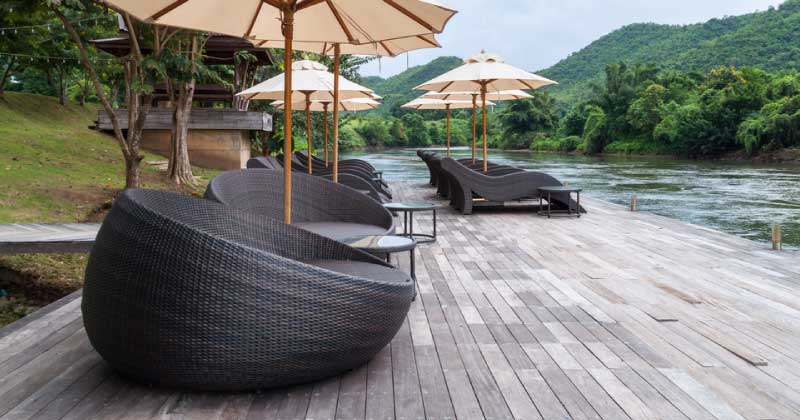Extend The Life of Your Wood Deck
There are several advantages to building with wood.
- It’s abundant.
- It’s flexible.
- It is self-regenerating.
- It’s adaptable.
- It is simple to deal with.
It is available in a number of styles and varieties.
The strength of trædæk, however, is perhaps the most crucial factor. Wood is inherently resistant to the forces of nature, as is intended by nature. Even while wood can survive for many years, it ultimately degrades and decays. There are a few basic things you can do to slow down the deterioration and ensure that your wood building lasts for decades.
What causes wood to destroy?

Fungi is the quick answer. Fungus spores are everywhere, and when the appropriate conditions exist, they infiltrate komposit træ and cause decay. Those factors oxygen, temperature, and wetness – are nearly impossible to avoid. It’s a powerful biological combination that occurs naturally and on purpose, but it may cause problems for man-made buildings.
What Can You Do?
Make use of solid wood.
Redwood and Cedar from your local lumber yard are your best options for a durable, dependable construction material. In fact, unlike a more permeable wood like Douglas Fir, Redwood and Cedar will maintain their integrity for a lifetime. They will, however, oxidize and get discolored as a result of the sun and water, and can benefit from certain preventative measures.
Stain it
Staining wood is frequently thought of as a purely aesthetic procedure. Staining your wood is a terrific method to give it a distinctive aesthetic, but it’s also an amazingly effective protective coating that will keep your wood structure from decomposing, or at least slow it down. However, not all stains are made equal. Oil-based stains are the most effective for wood protection. The oil enters the pores of the wood, sealing them off from water and preventing decay. Staining your wood not only protects it from rot and water damage, but it also protects it from the sun’s UV rays, which cause it to “gray,” making it appear much older than it is. Because oil degrades over time, you’ll need to reapply stains every few months.
Wash it

Wood becomes filthy from time to time. While it may appear to be 100 years old and crumbling, this is rarely the case. When wood begins to “gray,” it’s mainly due to tannic acid coming to the surface from within the wood. Tannins do not affect the color of wood permanently. You can wash your wood and have it looking like new in minutes with some wood brightener, wood cleaner, and a cloth or brush. If the tannins have built up over a lengthy period of time, you may want to clean the wood using a power washer. However, excessive pressure might destroy the wood fibers.
PTL
Have you ever wondered how piers and docks manage to maintain their structural integrity while being battered by saline water and wind every day for decades? Lumber that has been pressure-treated. PTL is used for the most demanding buildings since it is treated with chemicals that repel everything from insects to water to dirt. The posts on your deck are almost certainly constructed of PTL. PTL is an excellent choice if you require wood that can resist the worst conditions. It isn’t suited for every project – and it isn’t the nicest option – but if you need wood that can withstand the harshest conditions, PTL is a decent choice.
Cover it
Covering your project wood to protect it from the weather while you build your building may seem self-evident, but it is critical. The majority of jobs are completed in a few days. When exposed to the weather, wood can bend, twist, and turn, leaving it worthless. If you don’t have a shed or garage to keep your wood while it’s not in use, make sure it’s completely covered with tarps on the bottom and top.














